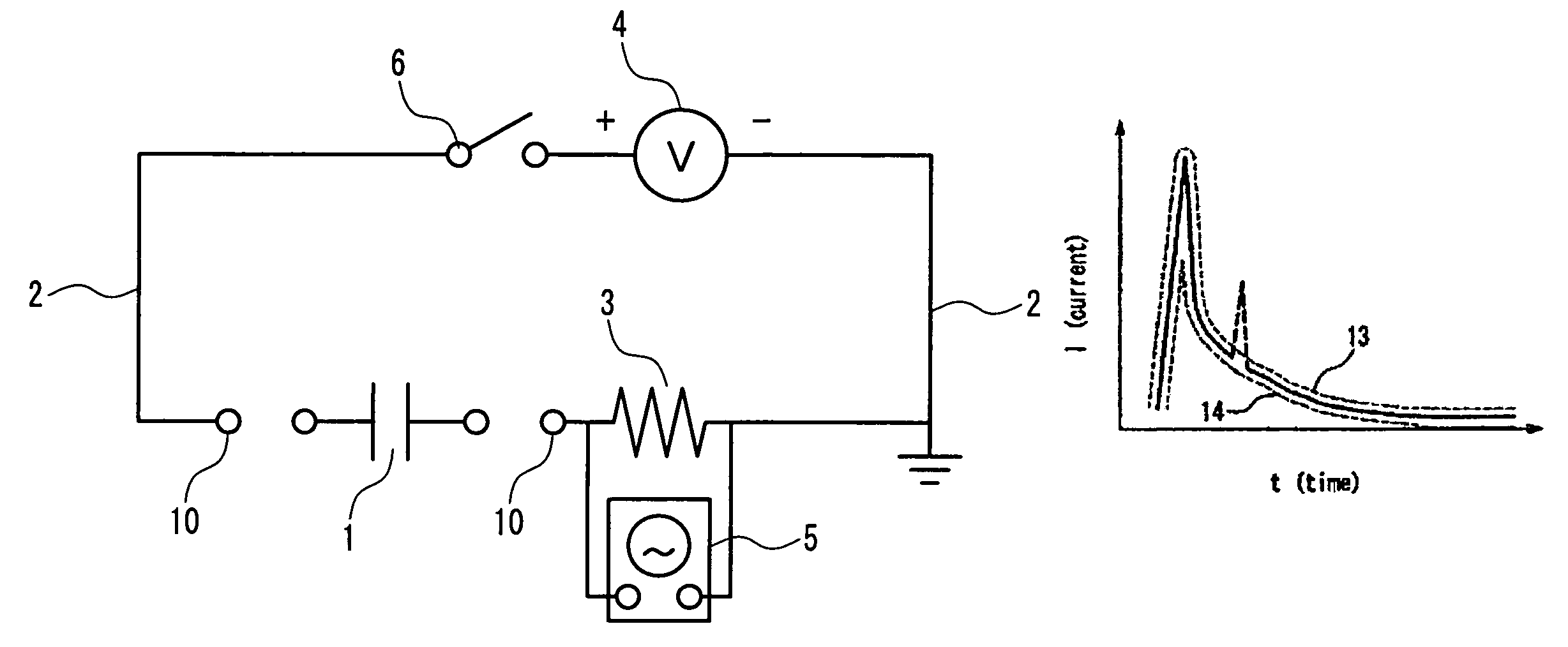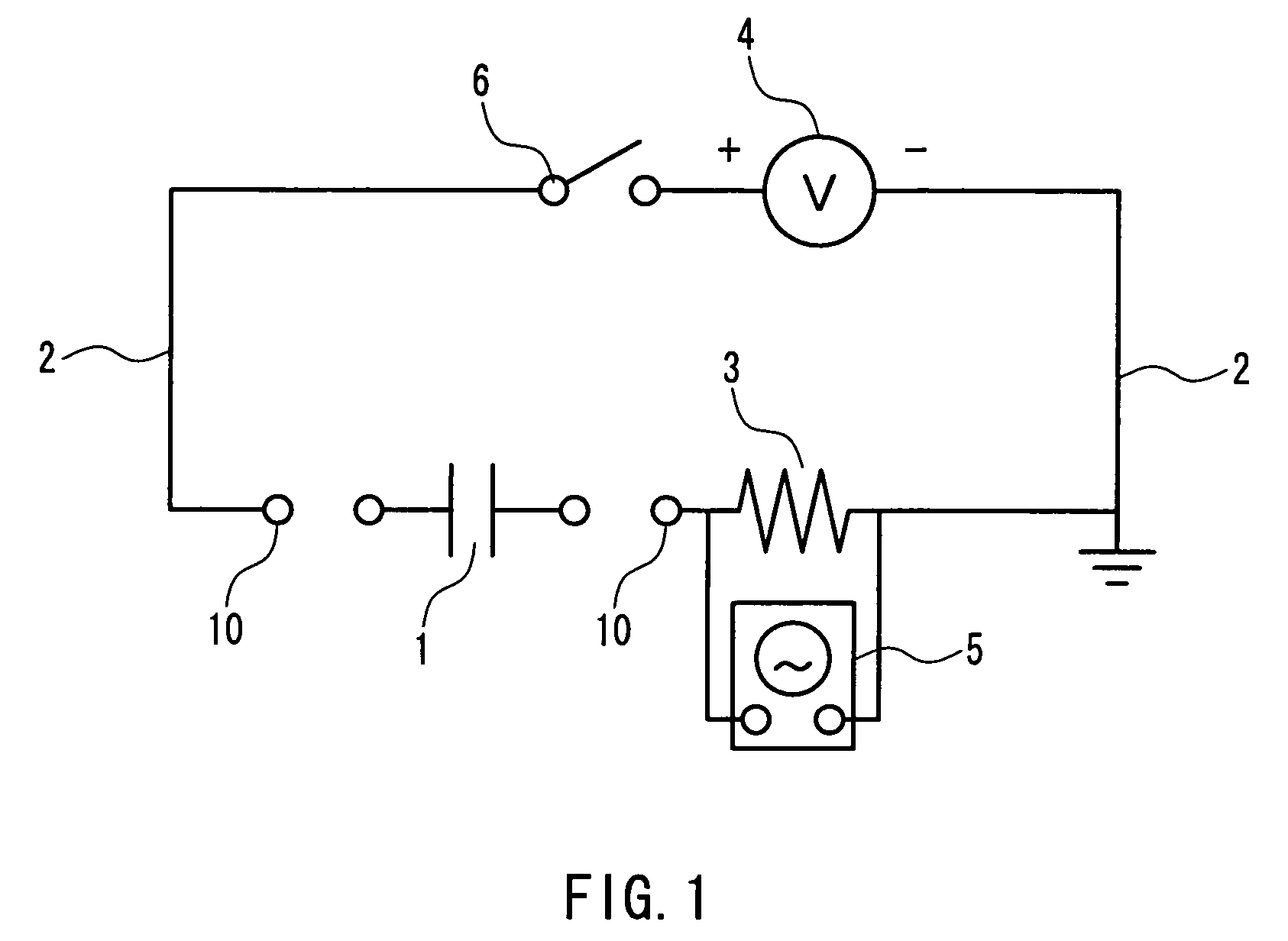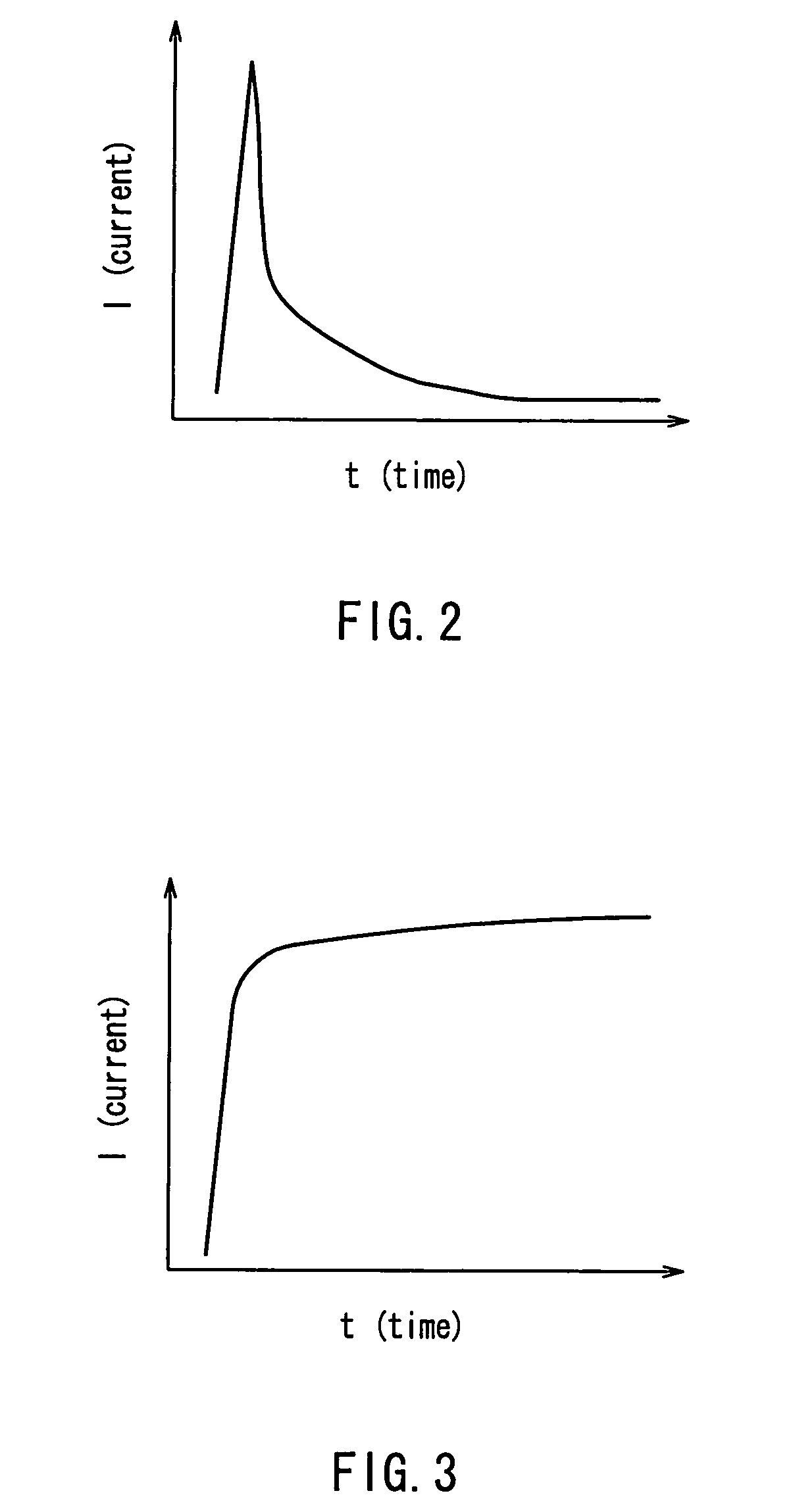Method and device for inspecting secondary battery precursor and method for manufacturing secondary battery using the inspection method
a secondary battery and precursor technology, applied in secondary cell servicing/maintenance, sustainable manufacturing/processing, instruments, etc., can solve the problems of difficult detection of potentially short-circuited products, application of inspection methods, and inability to detect short-circuited products, etc., to achieve effective screening and short time
- Summary
- Abstract
- Description
- Claims
- Application Information
AI Technical Summary
Benefits of technology
Problems solved by technology
Method used
Image
Examples
embodiment 1
[0037]In Embodiment 1, an inspection method and an inspection device of the present invention will be described.
[0038]If a foreign object is present between electrodes, or a separator is defective, an insulation distance between the positive and negative electrodes is reduced substantially. In this case, when an electrode body is charged, a discharge phenomenon (surface discharge) is likely to occur parallel to a surface of the separator as a porous material. By using the inspection method of the present invention, a current due to such a surface discharge can be detected. The surface discharge can be detected even if the distance between the positive and negative electrodes is extremely short. The surface discharge phenomenon includes a partial discharge phenomenon caused locally in the separator, and an arc discharge phenomenon caused between the positive and negative electrodes.
[0039]Hereinafter, the inspection method of the present invention will be described. The inspection met...
embodiment 2
[0071]In Embodiment 2, a description will be given of an exemplary method for manufacturing a secondary battery of the present invention.
[0072]The secondary battery to be manufactured in the present invention is, for example, a nickel metal hydride battery, a lithium ion secondary battery, and the like. Among them, a lithium ion secondary battery with a thin separator (e.g., 25 μm or less) is particularly suitable.
[0073]The manufacturing method of the present invention is characterized in that a secondary battery precursor before being brought into contact with an electrolyte solution is inspected by the inspection method of the present invention. Other manufacturing processes may be realized by well-known manufacturing methods. Further, components of the battery may be formed with well-known components. Hereinafter, an exemplary manufacture of a lithium ion secondary battery will be described.
[0074]Initially, a secondary battery precursor including a pair of electrodes and a separa...
example
[0081]Hereinafter, the present invention will be described in further detail by way of an example. However, the present invention is not limited to the example described below.
[0082]Initially, an electrode body of a secondary battery (secondary battery precursor) was produced. A positive plate 51 was produced by applying a paste containing lithium cobaltate (main component) and acetylene black to both surfaces of an aluminum foil. At this time, a collector lead was welded to a part of the aluminum foil instead of applying the paste thereto. A negative plate 52 was produced by applying a paste containing graphite as a main component to both surfaces of a copper foil. At this time, a collector lead was welded to a part of the copper foil instead of applying the paste thereto.
[0083]The positive plate 51 and the negative plate 52 were laminated and wound with a separator 53 sandwiched therebetween, whereby the electrode body was obtained. A porous film (thickness of 20 μm) made of polye...
PUM
| Property | Measurement | Unit |
|---|---|---|
| voltage | aaaaa | aaaaa |
| voltage | aaaaa | aaaaa |
| thickness | aaaaa | aaaaa |
Abstract
Description
Claims
Application Information
 Login to View More
Login to View More - R&D
- Intellectual Property
- Life Sciences
- Materials
- Tech Scout
- Unparalleled Data Quality
- Higher Quality Content
- 60% Fewer Hallucinations
Browse by: Latest US Patents, China's latest patents, Technical Efficacy Thesaurus, Application Domain, Technology Topic, Popular Technical Reports.
© 2025 PatSnap. All rights reserved.Legal|Privacy policy|Modern Slavery Act Transparency Statement|Sitemap|About US| Contact US: help@patsnap.com



